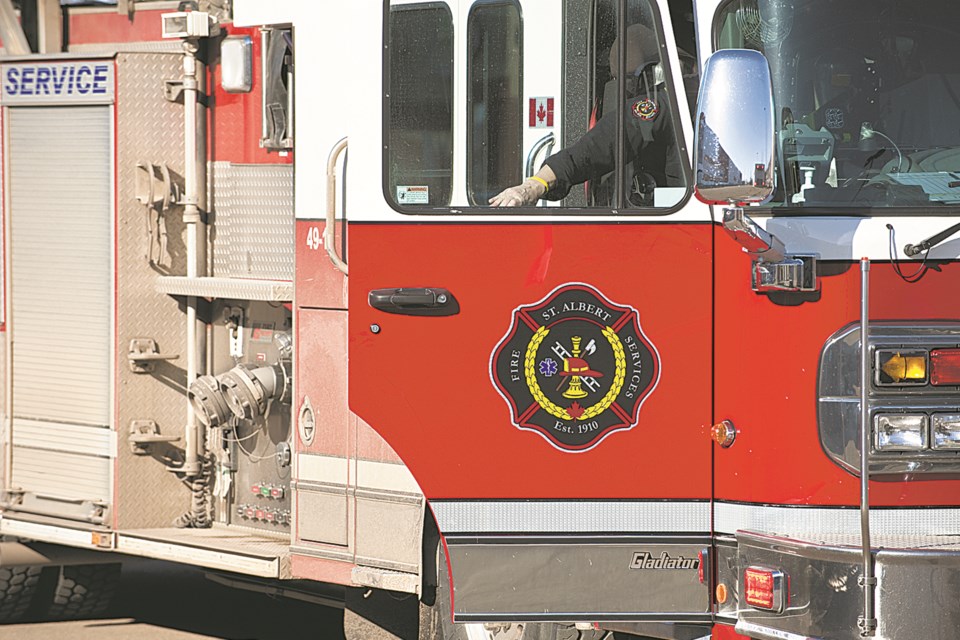A new fire station scheduled to open in 2025 may be the first of its kind in St. Albert, as the city considers a modular design for the building.
Modular buildings, or prefabricated buildings, are structures initially built off-site, then transported and set in place.
During a standing committee of the whole meeting on Nov. 15, St. Albert Fire Services (SAFS) fire chief Everett Cooke told council that the appeal of using a modular design is the new fire station, Fire Hall No. 4, could be expanded or even moved to another location if required in the future. As well, Cooke said, modular buildings are cheaper than standard permanent structures, and the fire hall would have an estimated lifespan of 50 years.
A Lethbridge-based company, EXTREME Modular Buildings, previously built a fire station for the Calgary Fire Service in 2020. The modular fire hall in Calgary's Walden neighbourhood has one apparatus bay, as well as standard accommodations for four firefighters.
Cooke told council that making Fire Hall No. 4 a two-bay modular station would save an estimated $4.7 million on project costs. However, when the project was approved in the 2020 budget, the fire hall was to feature four apparatus bays. In the 2020 budget, the project's total estimated cost was $16.3 million.
The land plot for the new fire hall at the northwest corner of St. Albert Trail and Neil Ross Road was purchased by the city in January 2022. In the original project charter, $250,000 was reserved for land-servicing costs, but council heard on Nov. 15 that the purchased land is entirely unserviced, and an estimated $2.18 million of the project's funds will be needed to connect the plot to water, sewage, and electricity.
"The additional costs to service the land will be absorbed by savings returned from selecting a modular design," city spokesperson Nicole Lynch said in an email. "The total cost associated with this project charter has not changed."
Lynch said the only other modular building owned by the city is located at the Jack Kraft Facility in Campbell Business Park.
"A few years ago the city purchased a modular office trailer that is used for internal safety and training purposes," Lynch said.
In an email, Mayor Cathy Heron said “I do like the flexibility of this type of build," adding, "we can add to it in the future or move it to an entirely new site as the city grows.”
“I am very supportive and applaud our administration for looking at other successful builds in order to save residents money,” Heron said.
In an interview, Coun. Sheena Hughes said although the modular building design as Cooke presented it was cheaper than initially expected, she wants to know if the cost savings are from the modular build, or because of the new fire hall having two apparatus bays instead of the four which were originally approved.
“What I want to actually see on that build (is) a real apples-to-apples comparison on what the real costs are for the fire hall for modular versus regular builds," Hughes said.
“What I would like to see in December is: what is the cost to do a building of two bays with the design that would allow expansion if and when it was necessary, as opposed to just building one that does not have an opportunity for easy expansion?”
The need for a fire hall in the north end of the city was originally identified in 2002, Cooke told council, when the city completed a long-range plan to address growth in the north and to address emergency response requirements, which are considered council approved service levels.
The SAFS service level currently expects fire crews to arrive at the scene of a call in under nine minutes, 90 per cent of the time. Lynch says SAFS is currently reaching that service level in the north end of the city 80-83 per cent of the time.
"When comparing data from 2018, the response times of the SAFS have improved to the north end of the city increasing from 62.5 to 66.7 per cent to 80 to 83 per cent," Lynch said.
"Much of this success can be contributed to the city’s improved road network as well as proactive steps being taken by dispatchers to pre-alert crews when a call is received."




